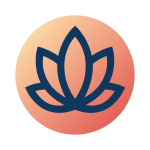FAQ
You will probably want a yoga mat. Props such as bolsters, blocks and belts are useful but can be built up as your practice develops. The most important thing to bring is YOURSELF.
Absolutely, we all need to start somewhere, everyone is welcome, no prior experience of yoga is assumed and modifications are always given.
Safety is the absolute priority so please discuss this with your instructor and doctor. Your best option is to seek out a pregnancy yoga class, led by an appropriately qualified instructor.
Yoga is not a competition, we need to honour our bodies and let go of our ego. If you are struggling to come in to a pose then ask for a modification if one is not offered. Never force yourself into a shape that you aren’t ready for.
Observe your body to learn how much time you need to digest your food before your practice. A small snack before your class is usually fine but it is not recommended to practice yoga on a full stomach.
Come as you are, if you are not flexible then you will soon see that yoga is a great way to become more flexible. People come to yoga with differing levels of experience and there is room for everyone. We are ALL learning.
Practicing yoga is a great way to prevent and ease menstrual cramps. It also relaxes the mind helping to take the edge off any mood swings you may experience. It is advisable to avoid postures, which require inversions during your menstrual period as it will tax your overall system
Please ensure that you have completed the Health & Safety questionnaire with your initial registration to highlight any pre-existing medical or physical conditions you may have. If you have a pre-existing medical or physical condition, consult your doctor first before embarking on any exercise.
Modifications can be made for a variety of medical or physical conditions and providing good care is taken you may still be able to continue with your practice. You should listen to your body and go at your own pace without pushing yourself to do more than feels right for your body. If you are unable to assume the full posture of a particular yoga move then ask for a variation to the pose.
Again, safety is the absolute priority so it is important to get the appropriate advice and discuss any medical conditions or injuries with your instructor and doctor. Yoga is a physical exercise and although it can be relaxing and help ease aches and pains, it can also be challenging and involve muscles you haven’t been using regularly, especially if you are recovering from injury or surgery.
If you have serious concerns, consult with your physician before starting a yoga practice. If you’ve simply fallen out of an exercise routine, listen to your body and only do what you can do, working to your edge and not past it. Use props and listen to the instructor’s instructions for modifying postures to make them more accessible. Over time, you’ll build up strength, stamina, balance and flexibility.
Not at all! As long as we are listening to our bodies and respecting our limitations.

